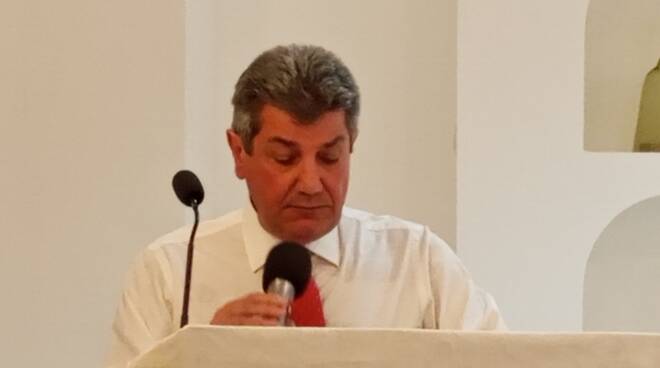Visiting The Lost City
Più informazioni su
A Day in Pompeii

Today, we had the chance to tour a city that long existed under a blanket of ash. In 2022, it’s hard to fathom that a time capsule of ancient Rome during the first century AD is accessible with so much preservation.
While it was sad to think about the loss of life so long ago, walking around the uncovered town and watching the tourists swarm the ancient streets with their shorts and earpieces, there was an air of hope cutting through the heavy burden of its history. Nearly 2,000 years ago, a tragedy unfathomable to the modern world occurred. But out of so much suffering came something amazing. It gave the modern world a window into the past, more thorough and authentic than any modern technology could have generated.

Coming from a country that many years ago made sure to erase any trace of its native history, this was something two American journalists could especially appreciate. While the history gained was not worth the lives lost, the fact that we were able to uncover the city to find the perfectly preserved history means those who tragically died in Pompeii did not die a meaningless death.
In the Campania region, Pompeii is easy to reach from the surrounding cities. The ancient ruins are a must visit when in Italy. Pompeii became a lost city in 79 A.D. when the stratovolcano Mount Vesuvius erupted. Smoke and toxic gas emitted 20 miles into the air, spreading into the town. According to research, between 15,000 to 20,000 inhabitants died from asphyxiation by volcanic ash or instantly from extreme heat.
As we walked around on the uneven cobblestone, listening to our tour guide, Giancarla, our surroundings seemed surreal yet mournful. It was difficult to comprehend how this once important and thriving city vanished and was completely sealed off from human intervention for decades. In the 16th century, architect Domenico Fontana discovered Pompeii by accident. Then in 1748, a surveying engineer stumbled upon the city again. Fast forward, millions of tourists travel to see the Forum, the baths, villas, temples of Apollo and Jupiter, the brothels, the basilica and more.


It was surprisingly easy to picture the life that was present thousands of years ago. There was a surplus of markets including one major delivery market, Macellum of Pompeii. The other smaller shops were easy to recognize as they had only one room. Gardens, stone benches and mosaic floors would indicate that the partial structure had once been a house. While these details might seem insignificant at first glance, it is the smallest details that can reveal the most about ancient Roman life. For example, a penis carved into the street, so small one might easily miss it, served as a sort of ancient GPS to find what we would now refer to as the red-light district. Walking through one of the brothels, often called a lupanare or “wolf den, shocked us as we saw detailed, erotic paintings above the building for prostitutes, or, lupa, meaning “she wolf.”
The House of Menander was one of the city’s richest villas and most intriguing. It’s believed that the owner was an aristocrat involved in politics based on the decorations around the huge house and his appreciation for Greek art and culture. The rooms in the house included four courtyard gardens, a lararium, which is a shrine for the household gods, a dining room which was always the largest room, the atrium, the bedrooms, servant quarters and horse stables. Because it was a wealthy home, the house overlooked the riverside and was decorated with frescos. Scenes of hunting, the Nile, the Trojan War and the color red (which was used from a popular mineral pigmentation throughout Pompeii) decorated the walls.
At the time of the eruption, the House of Menander was unoccupied, though looters’ skeletons were found looking for treasure around the house.

Prior to the eruption, Vesuvius was covered by lush vegetation and was devoted to the production of wine. The inhabitants of Pompeii lived without knowing they were on the edge of a volcano. March 1994 was the latest eruption though Vesuvius is still very much active.
One of the hardest parts of visiting the city is viewing the plastered shapes of the bodies. You can see people attempting to protect their faces from falling debris and parents holding babies in their arms. Stepping into the museum at the end to view the bodies is the perfect time to take a moment to remember the lives lost and appreciate the loss that allowed you to spend an incredible day at Pompeii, wandering the lost city.











